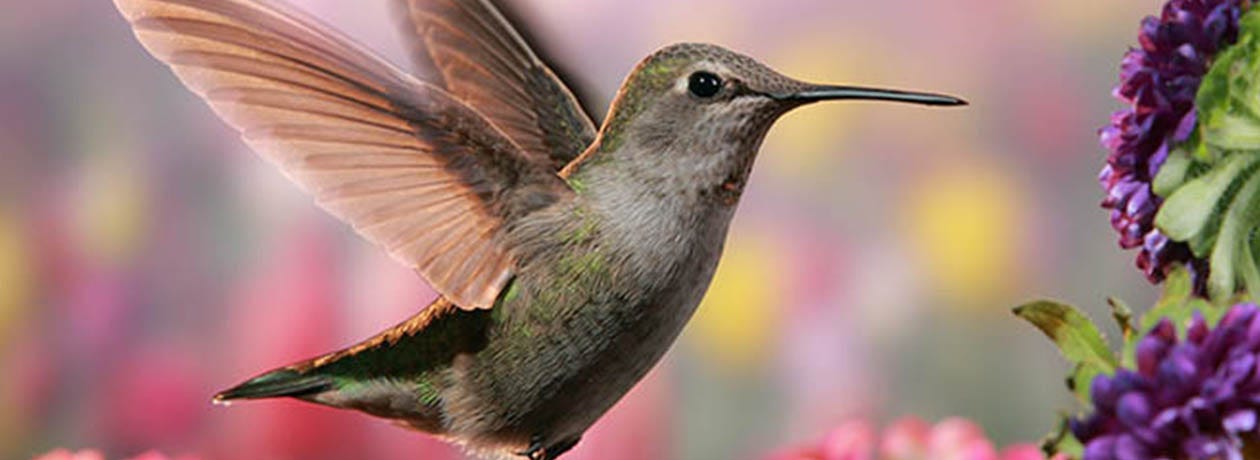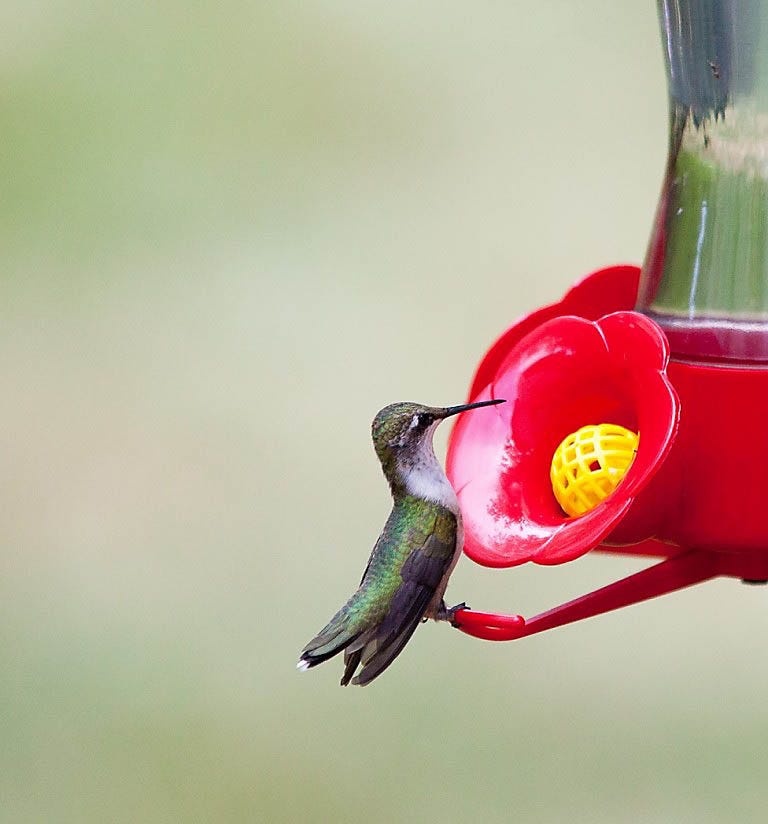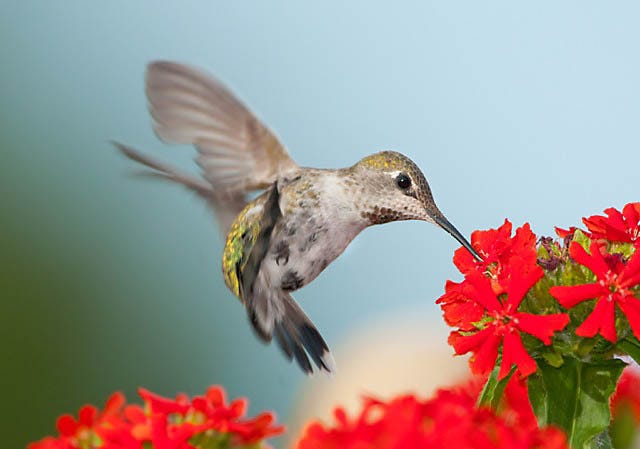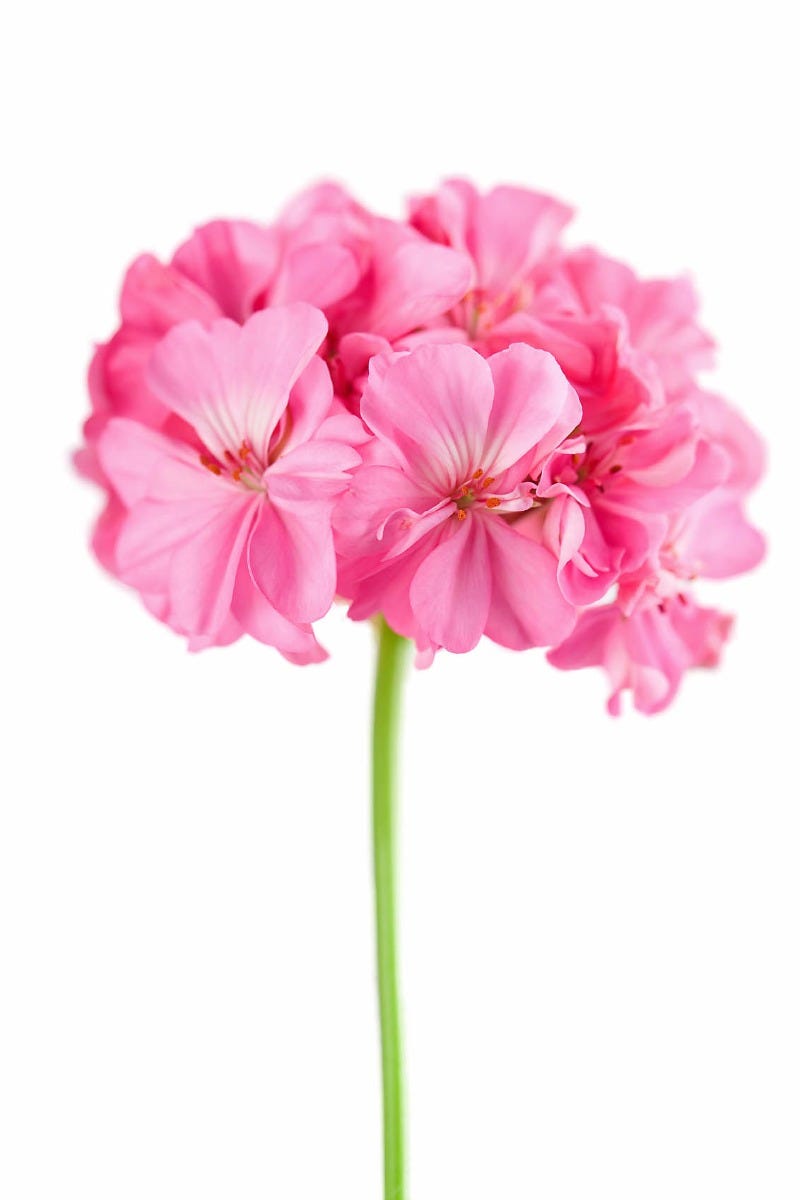25 Flowers that Attract Hummingbirds

Every bird fancier knows that certain species are attracted to certain plants – whether for food, protection or a place to roost overnight. For hummingbirds, plant selection is especially important since they have evolved to feed in a very specific manner. They require sugary nectar to keep their wings flapping and their metabolism running at the speed of a jackhammer.
In nature, that means they seek out flowering plants where they can harvest this nectar — usually from trumpet- or tube-shaped flowers. As humans, we’ve also helped these little birds along with hummingbird feeders. The ideal backyard habitat, however, includes a mix of hummingbird feeders and hummingbird flowers, and with a little gardening know-how, you can open up your yard to a steady parade of hummingbirds.
Setting aside time and space to develop such a welcoming habitat isn’t as difficult as you think. All you need to do is plant a few bushes and flowers and let nature do the rest. For the most part, hummingbird-friendly flora requires only a few hours of maintenance a year.
Hummingbirds and the Color of Attraction

The first thing you need in any hummingbird birdscape is color. You’ve probably noticed that many Perky-Pet® Hummingbird Feeders have splashes of red. That’s because many hummingbirds have learned to investigate red-colored objects. There's even been reports of the hummers zipping up to people wearing red shirts, investigating a flickering wind spinner or even carefully examining red-handled garden tools to see if they can grab a sugary treat.
Sure, hummingbirds are curious about other colors too – oranges, purples and yellows – but red can really entice them into a yard and a hummingbird feeder or two is the best all-season way to do it. After all, feeders don’t wilt in the sun or fail to bloom after a frost.
Unlike plants, feeders are around for good and offer a steady supply of food. The only way a feeder can fail is if the homeowner forgets to refill and clean them. That’s where you become an important part of a hummingbird’s life: Once a hummingbird finds a “garden” of well-maintained hummingbird feeders it’s going want to stick around.
At that point, it’s also helpful to make your yard an inviting birdscape. You want your yard to be the perfect home for a hummer, and you can do that by offering shelter and additional sources of food. The more comforts you have available, the more hummingbirds will visit your feeders.
Plants that Attract Hummingbirds

Making a natural habitat for hummingbirds is key to enhancing their stay. That means you’ll want plenty of hummingbird plants for them to use as food sources and a place to roost and rest.
Our list below includes four divisions of hummingbird flowers and plants. The first section covers flowers — these are mostly annuals that you’ll need to replant each year. Next are flowering shrubs and bushes, which work great as ornamental features around the home. Third we offer a short list of flowering trees that hummingbirds can use as food sources. Finally, the list includes a variety of vines that can be planted near a trellis, fence or arbor.
- Begonia (Begonia*) (Flower)
- Cardinal Flower (Lobelia cardinalis) (Flower)
- Columbine (Aguilegia*) (Flower)
- Coral-Bells (Heuchera sanguinea) (Flower)
- Flowering Tobacco (Nicotania alata) (Flower)
- Fuchsias (Fuchsia*) (Flower)
- Hollyhocks (Althea*) (Flower)
- Geranium (Pelargonium*) (Flower)
 Impatiens (Impatiens*) (Flower)
Impatiens (Impatiens*) (Flower)- Lantana (Lantana camara) (Flower)
- Penstemen (Penstemon*)(Flower)
- Petunia (Petunia*) (Flower)
- Azaleas (Rhododendron*) (Shrub)
- Butterfly Bush (Buddleia davidii) (Shrub)
- Flowering Quince (Chaenomeles japonica) (Shrub)
- Honeysuckle Bush (Lonicera*) (Shrub)
- Weigela (Weigela*) (Shrub)
- Eucalyptus (Eucalyptus*) (Tree)
- Flowering Crabapple (Malus*) (Tree)
- Locust (Robinia) (Tree)
- Tulip Poplar (Liriodendron Tulipifera) (Tree)
- Honeysuckle Vine (Lonicera heckrottii) (Vine)
- Morning Glory (Ipomea*) (Vine)
- Trumpet Creeper (Campsis radicans) (Vine)
- Trumpet Honeysuckle (Lonicera sempervirens) (Vine)
* Several species are suitable for hummingbirds
Not all of these plants will be perfect for your temperature zone and specific climate. It’s best to check the USDA Plant Hardiness Zone Map and find out which of these plants are best for your area.
Likewise it’s important to remember that most hummingbirds stick to a very limited climate zone of their own. The vast majority stay west of the Rockies or in a band from Texas to California.
East Coasters, on the other hand, will want plants that specifically attract the Ruby-throated Hummingbird, the only hummer that regularly travels east of the Rockies:
- Trumpet Creeper
- Cardinal Flower
- Honeysuckle
- Jewelweed
- Bee-balm
- Red buckeye, and
- Red Morning Glory
